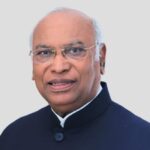The specter of unemployment looms large over India. A recent report from the International Labor Organization (ILO) reported that 83% of India’s unemployed workforce consists of young people. India has formally expressed its objections to the ILO over its latest employment report, citing inconsistencies in data sets, misinterpretation of youth employment data, and the overlooking of international mobility and gig economy workers.
Despite objections, a Reuters poll in April 2024, confirms that unemployment remains India’s foremost concern, even as the country maintains its status as the world’s fastest-growing economy. Notably, Kerala, often lauded as India’s most literate state, faces a youth unemployment rate of 40% as of June 2022, according to Congress MP Shashi Tharoor.
In an interview, Think School YouTuber Ganesh Prasad probed Tharoor about Kerala’s paradoxical unemployment issue. Prasad asked Tharoor why, despite being the most literate state in the country, Kerala’s youth are unemployed despite receiving the best education.
To this, Congress MP Shashi Tharoor cited that, along with the lack of opportunities, there is often a mismatch between what they have studied and what the marketplace demands, which is a chronic issue.
He cited studies by organizations like the Federation of Indian Chambers of Commerce & Industry (FICCI), revealing widespread dissatisfaction among employers.
“In a nationwide study, one of the FICCI studies reported, 82% of the employers were dissatisfied with the quality of the graduates they were recruiting,” Tharoor said.
Tharoor further elaborated on how major corporations like Infosys and Tata Consultancy Service (TCS) addressed this issue by providing remedial education to their hires, acknowledging a deficiency in the skills expected from qualified candidates.
“Both Infosys and TCS found a solution in essentially offering remedial education, not just job training but remedial education, to the people they hired. They give them another year of schooling in a very campus-like setting to teach them what they need to have already learned in university. Very few companies can afford to do that with that skill and quality. So many people enter the job marketplace unfortunately unable to offer the skills that their own qualifications would normally have expected them to be equipped with,” added Tharoor.
Discussing Kerala specifically, Tharoor referenced a survey among engineering graduates, revealing that 66% of these engineering graduates were in jobs that didn’t require engineering degree. “So, essentially they ended up not being able to use their degree for the employment that they eventually got,” added Tharoor.
Ultimately, Tharoor emphasized two critical factors contributing to India’s unemployment woes: mismatch between what is taught and what the marketplace wants and the other being the oversupply of the wrong kind of qualifications.
“We have to recognize that a country as ours produces half a million engineers every year but perhaps not enough in the field where there is a hunger and the demand for more people. Maybe we need people with qualifications in AI and robotics and machine learning and so on,” he shared.
Prasad also acknowledged this issue stating that he was an “unemployable civil engineer” because he didn’t know how to build buildings and barely passed his exams.
“Even if those who passed the exams, if you go and ask them practical questions, they won’t be able to answer. That is because we just stick to books which have outdated data, outdated content, and outdated concepts. Nobody is teaching us about pile engineering in Dubai. We are just learning about some random foundations and concepts which are not relevant today,” added Prasad.
Addressing the issue, Tharror elaborated how they have passed a rule stating that no new polytechnic could be established in India unless they had a tie up with a currently functioning industry within a 30 km radius.
“The problem is polytechnics are being established completely divorced from the real world, with no connection to industry. We teach outdated textbooks and try to impart instructions in absolute techniques. When people leave these polytechnics, they find that they knew nothing they found useful in the marketplace. They had a diploma or a degree to show for it,” added Tharoor.
While discussing a solution, Tharoor cited the Narayan Murthy report which he claimed has been kept on the shelf since the NDA government took over. Tharoor expounded on the contents of the Narayan Murthy report, highlighting its discussion on a successful model employed in the United States. He emphasized that in the US, it’s common practice for companies to collaborate with nearby educational institutions.
“In the US, when a company comes up with an idea, they go to a nearby campus and say, ‘Guys, do you have any graduate students or doctoral students who can research this for us? If they can make this idea viable and figure out a way it can be manufactured, we will provide funding for their research, stipends, and all necessary support. Then, if a product is feasible, we’ll manufacture it and share the royalties with you.’ It’s a win-win situation. This is how Silicon Valley was built,” said Tharoor.
Addressing the role of the government, Tharoor stressed the importance of creating an enabling environment. “The government’s job is to create a framework that facilitates or even incentivizes such collaborations,” he stated.
He expressed concern over the current state of research investment in India, noting that while most advanced countries rely on private sector funding for research, India’s research funding predominantly comes from the government, which he deemed insufficient.
Tharoor advocated for increased research investment from the private sector, suggesting it as a potential avenue for driving innovation and economic growth in India.



